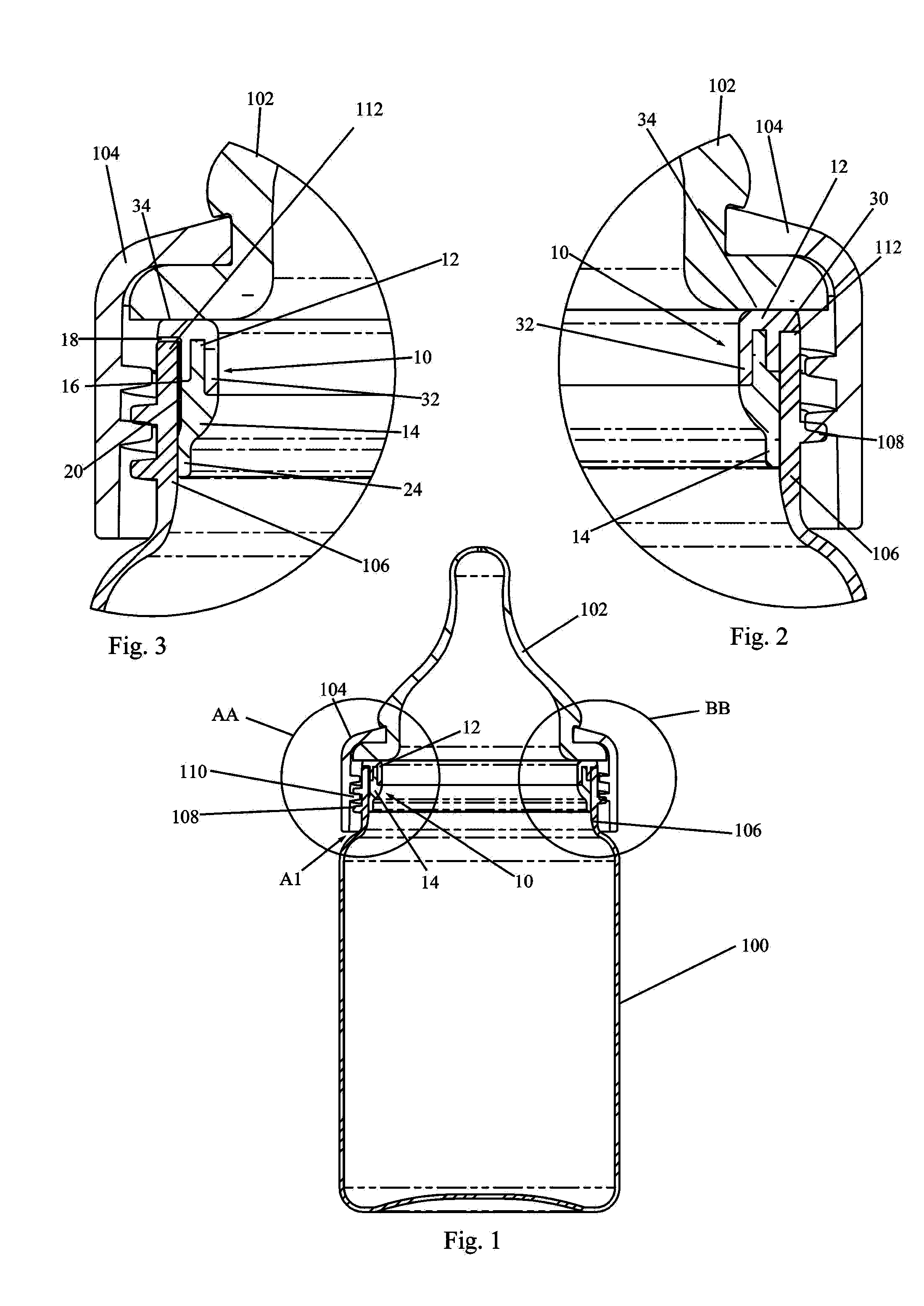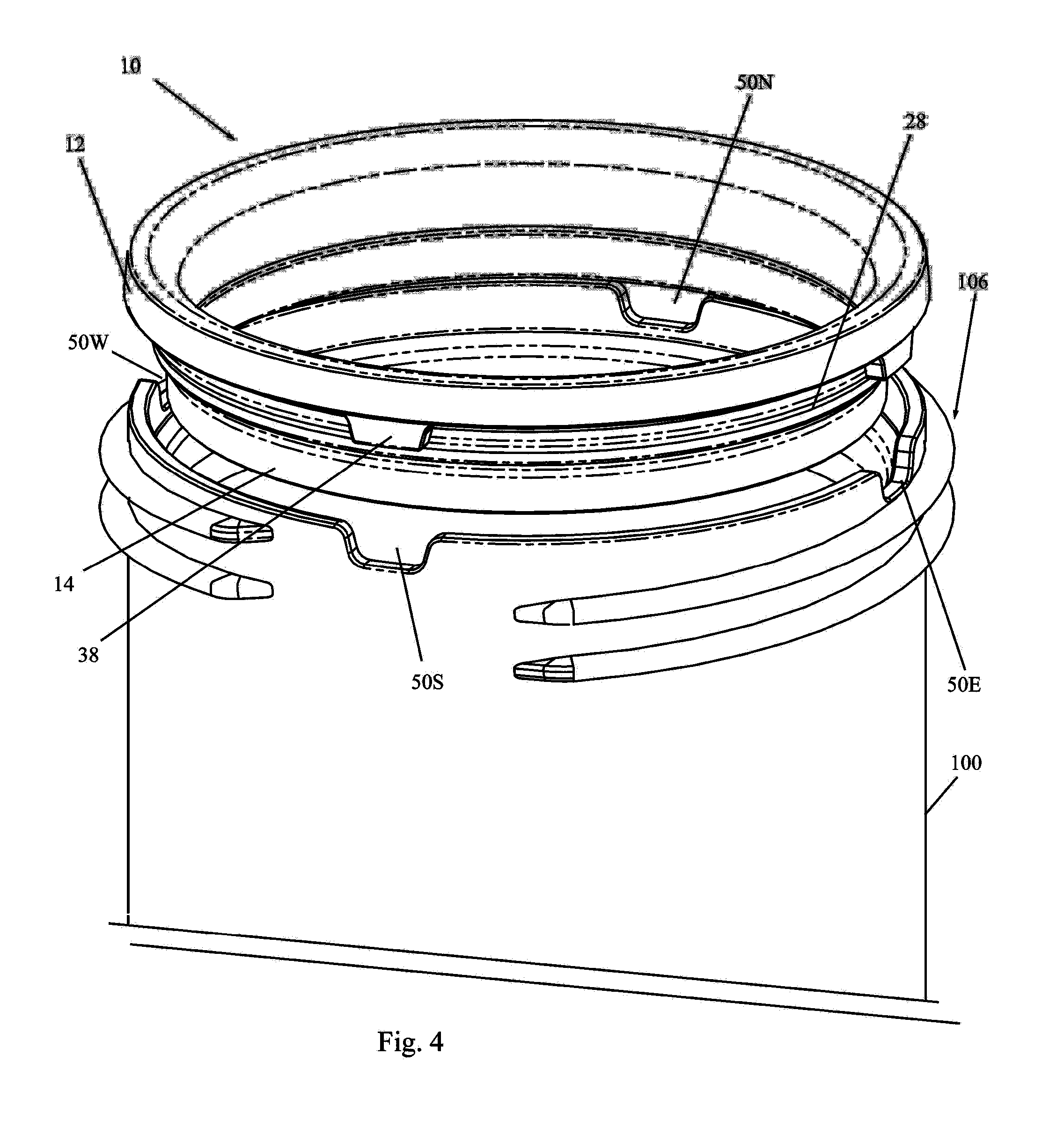Container and venting mechanism assembly
a technology of venting mechanism and container, which is applied in the direction of bottles, containers, drinking vessels, etc., can solve the problems of inconvenient cleaning, inconvenient assembly, and inability to clean, so as to prevent deformation of flexible flap/skirt, prevent deformation, and ensure the effect of sealing
- Summary
- Abstract
- Description
- Claims
- Application Information
AI Technical Summary
Benefits of technology
Problems solved by technology
Method used
Image
Examples
Embodiment Construction
[0035]Illustrative embodiments of the invention are described below. In the interest of clarity, not all features / components of an actual implementation are necessarily described.
[0036]FIGS. 1-4 show an embodiment, including modifications thereto, of the present invention. FIG. 1 shows a baby bottle having a container portion 100 and a cover, cap, lid, top, etc; which in the case of the baby bottle is typically constituted by a resilient teat or nipple 102 together with a nipple ring or collar 104. Container portion 100 typically has a mouth defined by a neck 106 having external threads 108 for engaging with internal threads 110 of collar 104. Neck 106 also has a rim 112. In the present assembly, rim 112 has four notches 50, individually designated 50N, 50S, 50E, 50W (FIG. 4), arranged substantially at “north”, “south”, “east” and “west” positions relative to each other, i.e. every ninety degrees. More notches 50 can be used, and potentially as few as three will provide suitable fix...
PUM
 Login to View More
Login to View More Abstract
Description
Claims
Application Information
 Login to View More
Login to View More - R&D
- Intellectual Property
- Life Sciences
- Materials
- Tech Scout
- Unparalleled Data Quality
- Higher Quality Content
- 60% Fewer Hallucinations
Browse by: Latest US Patents, China's latest patents, Technical Efficacy Thesaurus, Application Domain, Technology Topic, Popular Technical Reports.
© 2025 PatSnap. All rights reserved.Legal|Privacy policy|Modern Slavery Act Transparency Statement|Sitemap|About US| Contact US: help@patsnap.com



